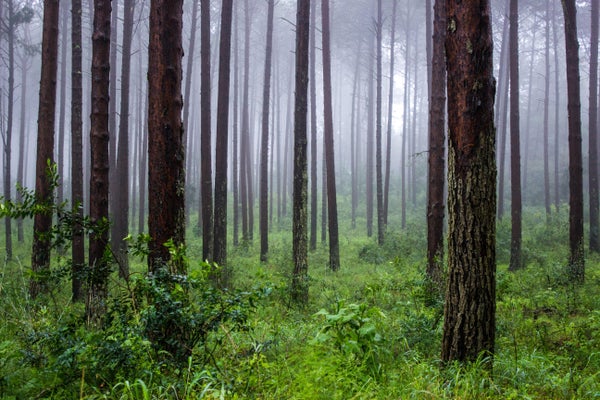December 1, 2023
3 min read
The powerful symbolism of forests, an AI that struggles to optimize the life of a “post-body” person, and more books out now
By Amy Brady

NONFICTION
Enchanted Forests: The Poetic Construction of a World before Time
Boria Sax
Reaktion, 2023 ($35)
The word “forest” came into English from medieval French, where it meant a place reserved for the king’s hunt. Poachers who violated this divine gift to royalty were punished, sometimes by death. Forests, then, are social constructions as well as communities of trees. “Every conception of the forest is a kind of cosmology,” writes author Boria Sax in this fascinating meander through the rich woodlands of literature and visual art.
Sax shows that forest tales reveal how we imagine time. Trees are at the center of origin myths such as Buddha’s enlightenment and Adam and Eve’s temptation. In Norse, Mayan and Zoroastrian traditions, the first humans were trees transformed into people. From the Epic of Gilgamesh to the Aeneid, the arc of “civilization” emerges from and then conquers woodland. Forests are also home to allegorical stories about people’s lives, such as the “savage, bitter and intense” woods of Dante’s midlife and the rites of passage that unfold in fairy tales.
As farms and cities expanded, forests got pushed into the imagination, where they took on powerful symbolic roles. Sax highlights the contradictory nature of mythic forests: places of both Edenic innocence and terrifying chaos. These “enchanted” imaginings became enablers of human injustice and ecological despoliation. For European colonists, American, Asian and African forests were frightening and primeval. Progress, they thought, demanded that forests be cleared of trees and Indigenous people, an idea that still drives land theft in many parts of the world.
For some writers today, forests are communities of cooperative talking trees. Others see competitive individualism, each trunk a reminder of the Darwinian struggle for life. Forests are imagined as numbers, too: metric tons of carbon or cubic meters of timber. Sax reminds us that these symbols and projections change how we treat one another and the land. Implicit is the challenge to rethink our stories. Are we like medieval kings, taking the forest by right, or can we find narratives of reciprocity with forests and forest-dwelling cultures? —David Haskell
IN BRIEF
Nuts & Bolts: Seven Small Inventions That Changed the World (in a Big Way)
Roma Agrawal
W.W. Norton, 2023 ($29.99)
“How does a refrigerator work?” a classmate once asked in my high school physics class, derailing the lesson as we tried to identify fundamental components and forces. Nuts & Bolts seems written for such thinkers and tinkerers. Enlivening the history and engineering principles behind seven key inventions are examples that span the mundane to the extraordinary: wheels enable dishwashers as well as the International Space Station; pumps make water faucets and space suits possible. If you delight in dissecting the whole, author Roma Agrawal places great cultural and philosophical value on scrutinizing the parts. —Maddie Bender
After World: A Novel
Debbie Urbanski
Simon & Schuster, 2023 ($27.99)
After an artificial superintelligence targets humanity with a sterilization virus, it invites the last people to have their “post-body” lives preserved and uploaded to a new virtual world through the Digital Human Archive Project (DHAP). One “storyworker” called ad39-393a-7fbc is tasked with converting the life and death of a young woman into an optimized narrative format, but as it synthesizes journals, transcripts and reference texts chronicling her harrowing experience of the Great Transition’s violent social collapse, it struggles to maintain the authorial distance that DHAP requires. This inventive love story is meticulously experimental with time and structure. —Dana Dunham
>>> Read full article>>>
Copyright for syndicated content belongs to the linked Source : Scientific American – https://www.scientificamerican.com/article/how-forest-mythology-leads-to-preservation-and-plunder/